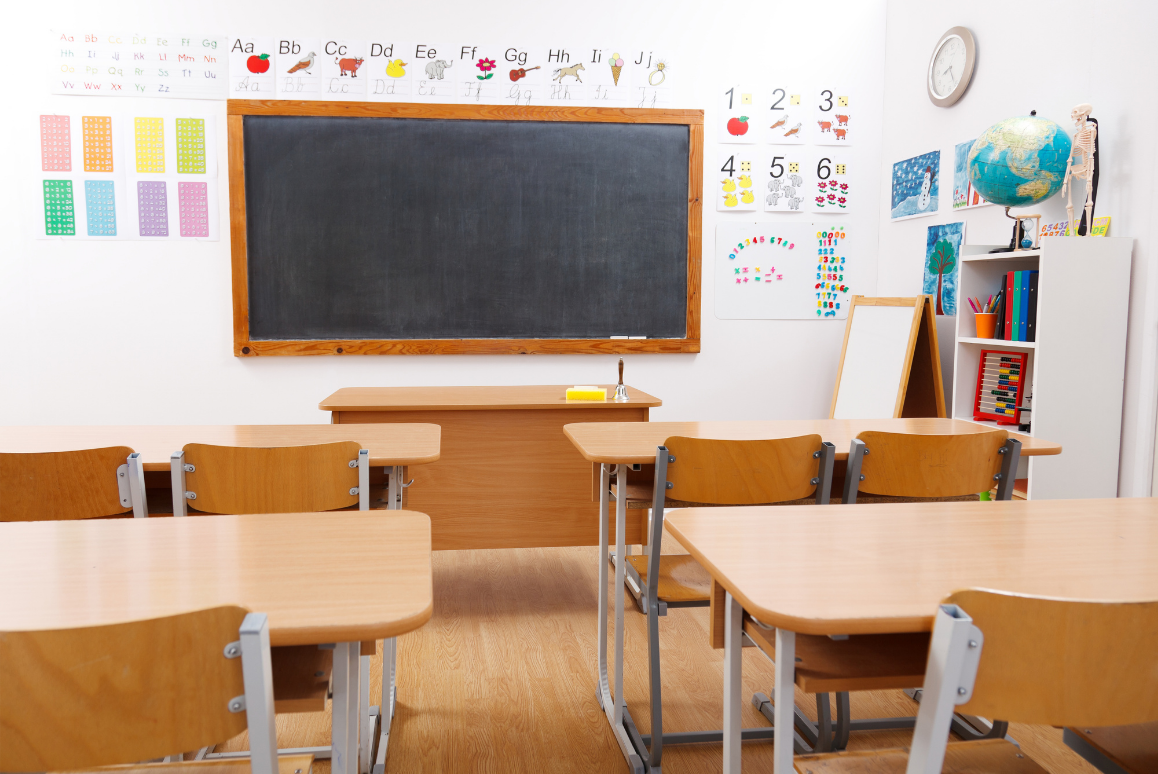It’s back-to-school season, which means teachers everywhere are thinking about how to give kids their best year yet. That includes setting up the classroom to support and inspire students.
While the KonMari Method™ works in any space, including offices, small businesses and more, certain rooms have unique requirements and benefit from extra planning. We asked two certified KonMari consultants, Julia Barker (Barcelona, Spain) and Caroline Thor (Heidelberg, Germany), to give us their pointers on organizing a classroom that sparks joy. Before embarking on their careers as tidying experts, both Julia and Caroline taught in their own classrooms.
KonMari: We tend to talk about The KonMari Method in terms of tidying the home. Are there any significant differences between tidying up private spaces or public ones like the classroom?
Julia Barker: Identifying what sparks joy may feel slightly different when dealing with “essentials,” such as manuals, textbooks or reporting software. Asking, “Does this make my job easier, which in turn sparks joy for me?” can help. Identifying obsolete resources (floppy discs, atlases that still include Yugoslavia and the USSR, etc.) is an investment for the whole organization in terms of efficiency and how limited classroom space is used.
KM: What are some tidying and organization challenges in a classroom setting?
JB: In a shared space, we often have less freedom (and budget!) to implement storage systems that match our personalities or current needs. Reiterating to management that everybody works more efficiently when they’re not spending time looking for things can help build support for reorganizing. Identifying what type of storage makes better use of the space is a win for everybody — less time spent searching for a specific file, book or materials means more time working on core tasks!
KM: Any tips for keeping things tidy with kids around — especially when it’s a classroom full of them?
Caroline Thor: The KonMari Method really helps with this! Only having the things you need, the things that spark joy, means that you won’t have too much. This makes it easier to maintain a system. Making sure kids understand the value of putting back things they have used means they are more likely to. With younger kids, making it fun, such as having “tidy up time” to music at the end of an activity, helps them to enjoy the process.
KM: Anything else that helps with maintaining order through the school year?
JB: In terms of the actual organization of a classroom, I’d recommend storing alike items together (as far as space allows). Set up a stationery corner and a textbook shelf. I’d also recommend a storage area that only you have access to where you can keep certain materials — those dry wipe markers have a habit of growing legs with teenagers around. Label these storage places using words and pictures, if you have children with additional needs or whose first language is not that of the classroom.
What are your recommendations to teachers in the weeks leading up to a new school year?
JB: Rest and recuperate! And after that? Before diving into lesson planning and resource making with joy, allocate time to consider which of your personal and classroom routines save or waste time day-to-day. How can you minimize time spent on repetitive tasks? Which tasks take up too much time? Can these be made more efficient? Identifying daily, weekly and termly routines for yourself and your students is essential.
KM: Are there any tools or storage solutions you’d particularly recommend to teachers? Any tips for organizing class supplies?
JB: Well-organized (and backed up) digital storage is a must. So many of our resources are now digital or print-on-demand, so having this side of things taken care of is just as important as knowing where your set texts are. Relying on cloud storage is fine, but if you change employment, make sure you know what is yours to take and what you will lose access to! I also love magazine files to store paper items vertically, which is a much more efficient use of space.
CT: Boxes, boxes and more boxes. Having everything in boxes is a game-changer. All the markers in one box, scissors in another, paints in another. Especially important: Label them, so everyone knows what goes in each box.
KM: Any final words of advice for our incredible teachers?
JB: So much of keeping a tidy and organized classroom is about tidying your time. Teachers and school staff are at best busy, and at worst overworked. Taking time now to consider your routines and maintenance strategies will save huge amounts of time when the academic year gets going!
CT: My final tip would always be to make sure to appreciate what students get done. Rather than commenting on what didn’t get put away, express gratitude for the help and the things that did go well. This will motivate them to help next time.
Interested in working with Julia or Caroline? You can find them in our consultant directory, along with other KonMari experts all over the world. Or become a consultant through our online certification program!








